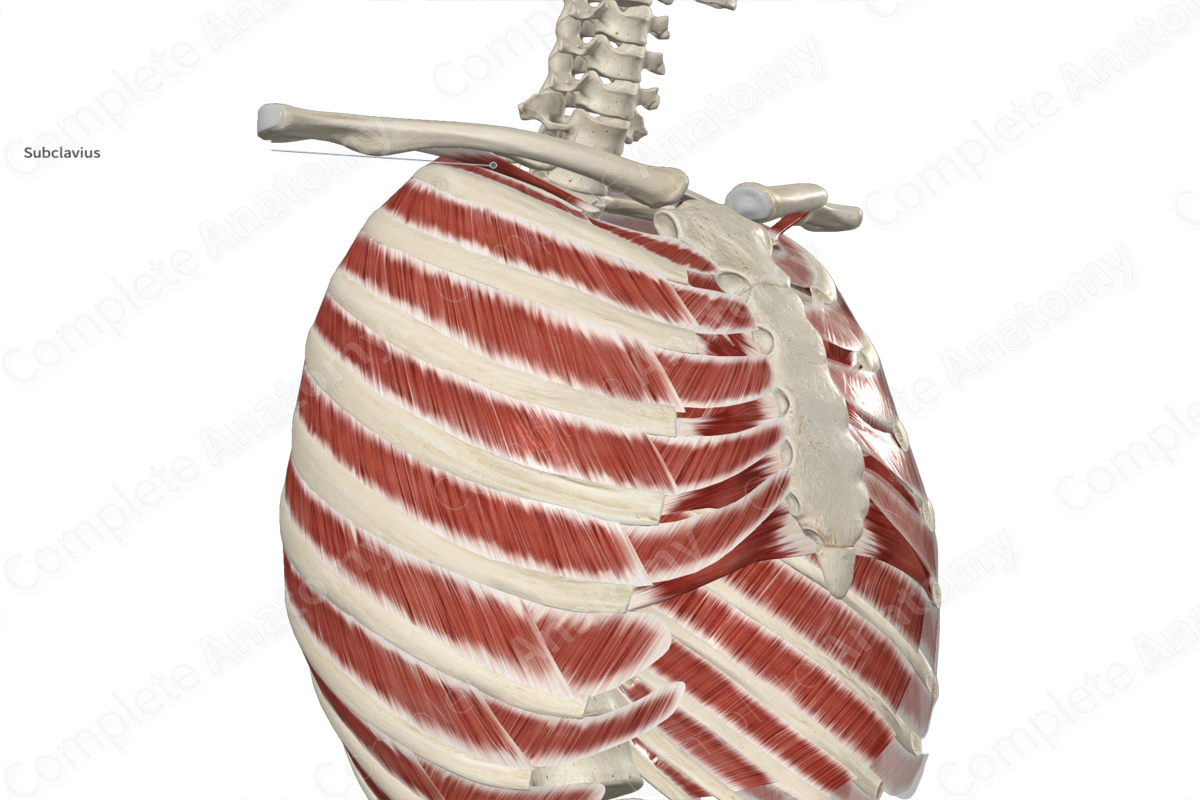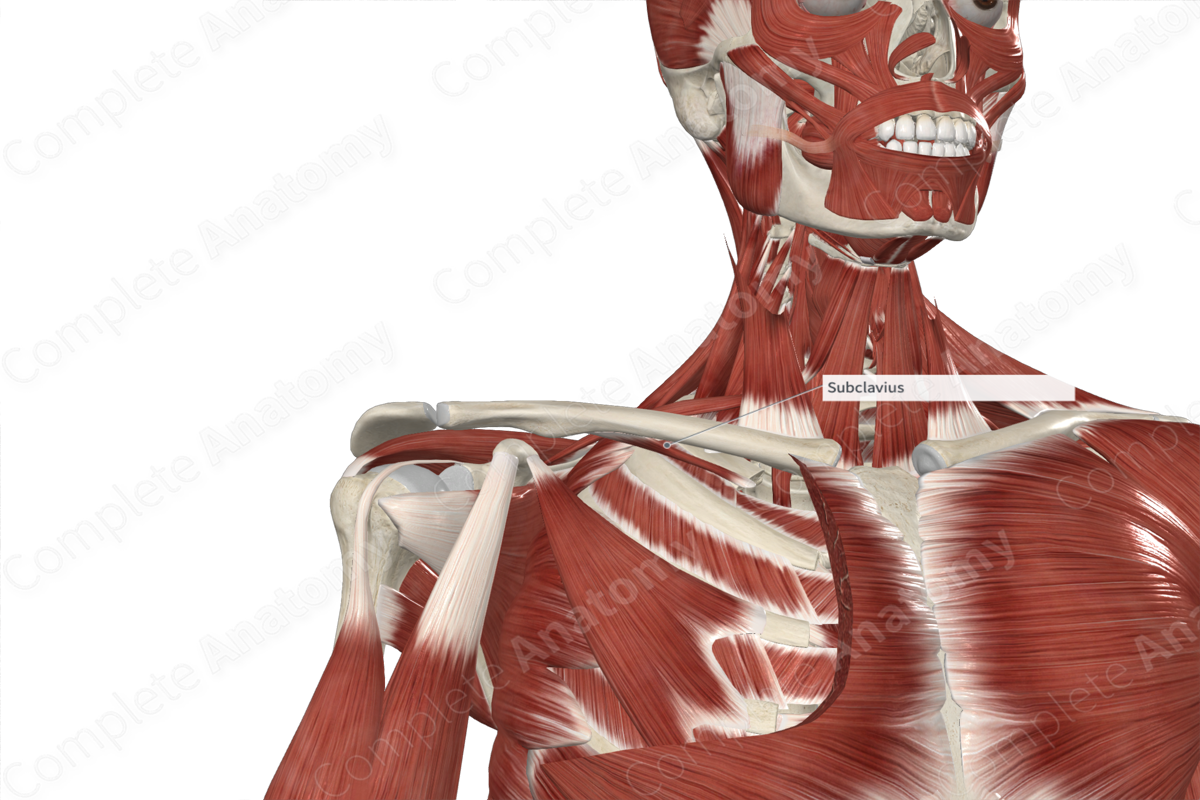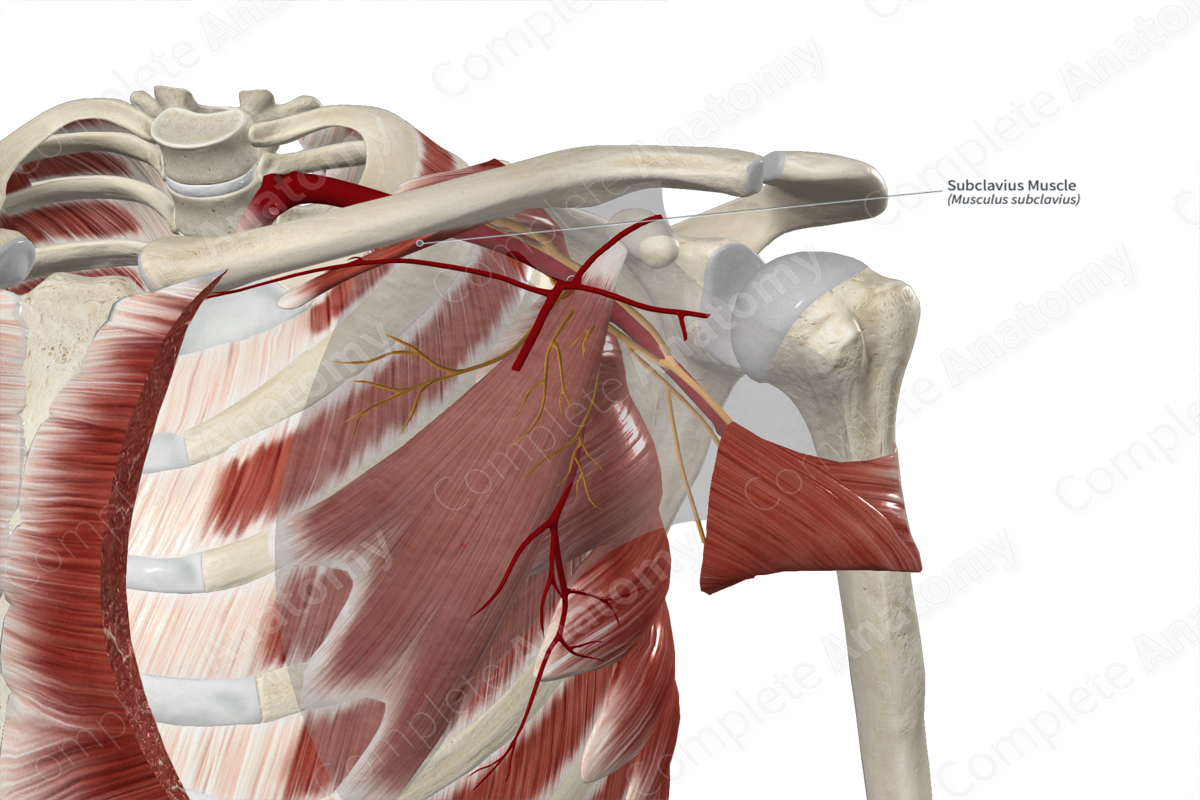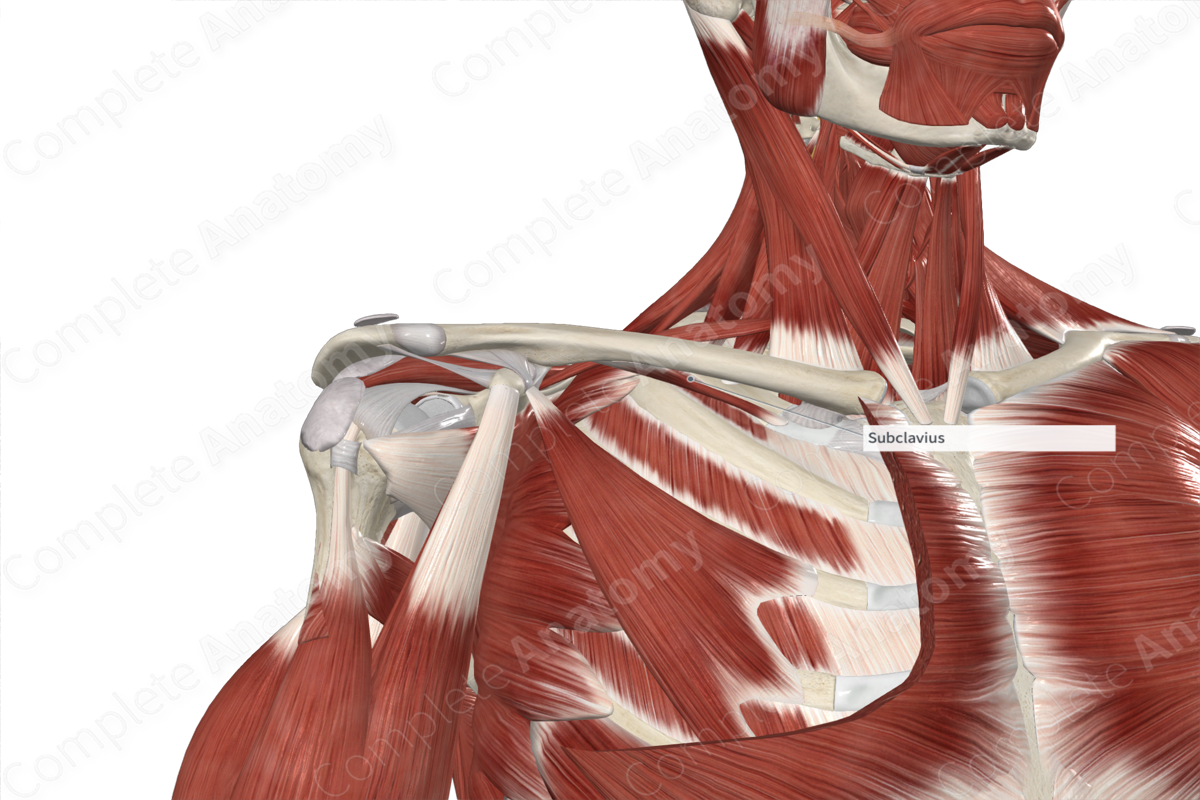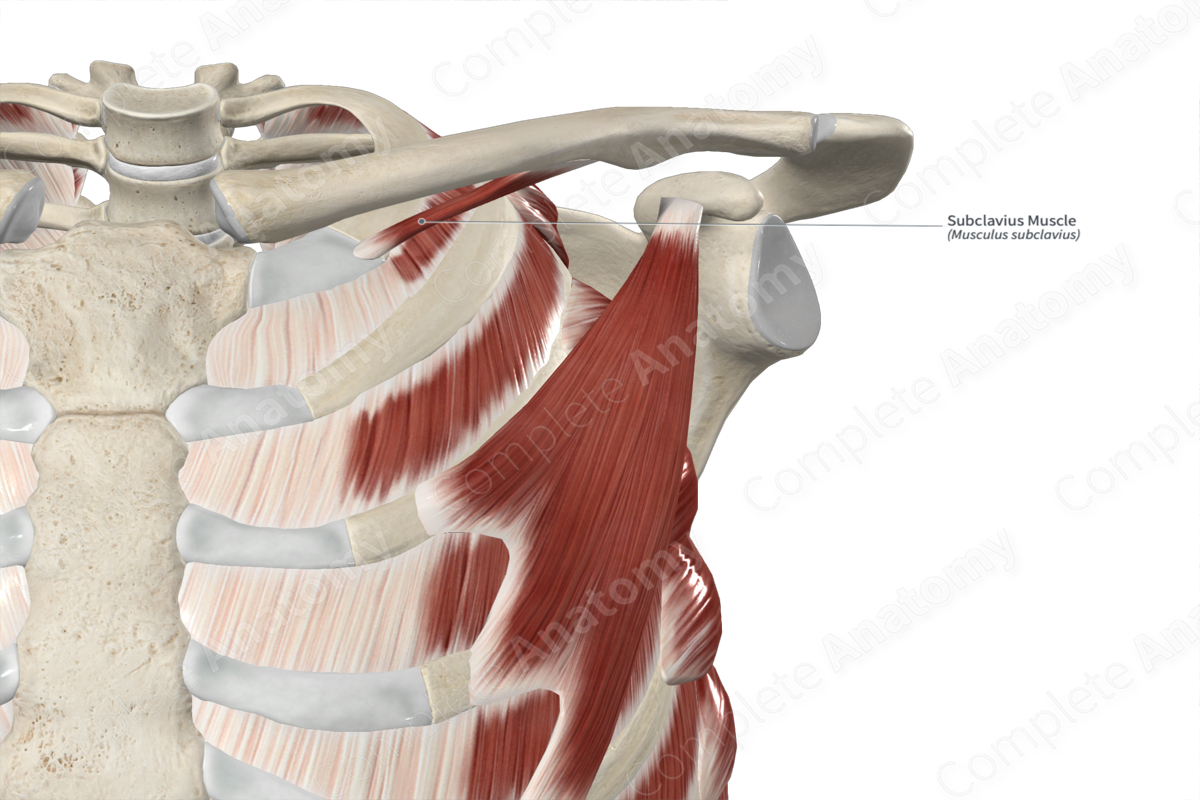
Quick Facts
Origin: Superior surface of costal end of first rib and adjacent first costal cartilage.
Insertion: Inferior surface of the middle one third of clavicle.
Action: Stabilizes clavicle.
Innervation: Nerve to subclavius muscle (C5-C6).
Arterial Supply: Clavicular branch of thoracoacromial artery and suprascapular artery.
Related parts of the anatomy
Origin
The subclavius muscle originates from the superior surface of the costal end of the first rib and its adjacent first costal cartilage.
Insertion
The fibers of the subclavius muscle travel superolaterally and insert, via a broad tendon, onto the groove for subclavius muscle. The groove for subclavius is found along the inferior surface of the middle one third of the clavicle. In some individuals, the subclavius muscle inserts onto the coracoid process of scapula, while in others it can insert into both the groove for subclavius muscle and the coracoid process.
Key Features & Anatomical Relations
The subclavius muscle is found in the pectoral region of the thorax. It is a small, triangular skeletal muscle. It is located:
- anterior (superficial) to the first rib, the first intercostal space, the subclavian artery and vein, and the brachial plexus;
- posterior (deep) to the pectoralis major muscle;
- inferior to the clavicle.
Actions
The subclavius muscle helps stabilize and control the mobility of the clavicle during movements of the pectoral (shoulder) girdle, especially elevation (Standring, 2016).
References
Standring, S. (2016) Gray's Anatomy: The Anatomical Basis of Clinical Practice. Gray's Anatomy Series 41st edn.: Elsevier Limited.

